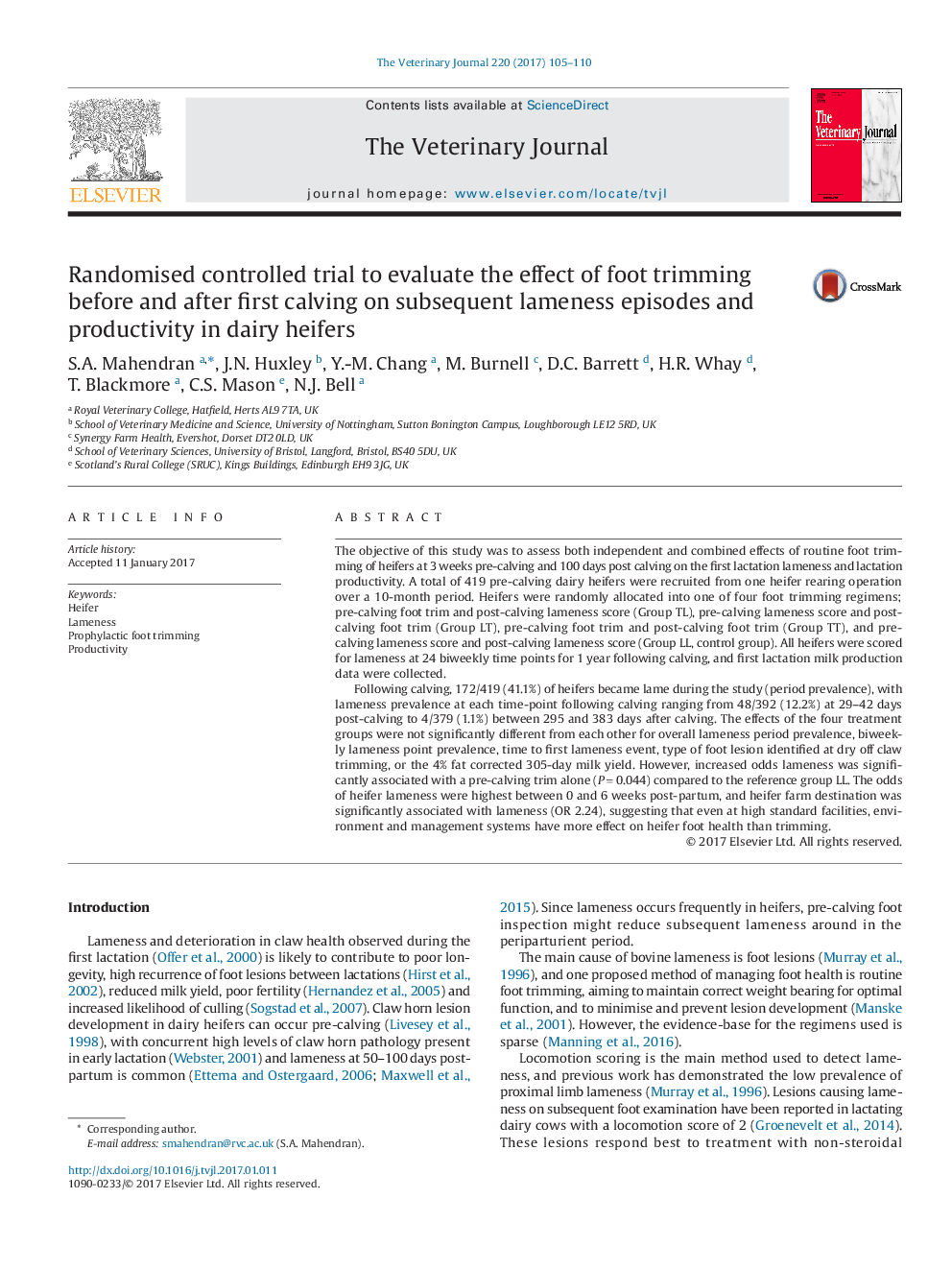| Article ID | Journal | Published Year | Pages | File Type |
|---|---|---|---|---|
| 5544862 | The Veterinary Journal | 2017 | 6 Pages |
Abstract
Following calving, 172/419 (41.1%) of heifers became lame during the study (period prevalence), with lameness prevalence at each time-point following calving ranging from 48/392 (12.2%) at 29-42 days post-calving to 4/379 (1.1%) between 295 and 383 days after calving. The effects of the four treatment groups were not significantly different from each other for overall lameness period prevalence, biweekly lameness point prevalence, time to first lameness event, type of foot lesion identified at dry off claw trimming, or the 4% fat corrected 305-day milk yield. However, increased odds lameness was significantly associated with a pre-calving trim alone (Pâ=â0.044) compared to the reference group LL. The odds of heifer lameness were highest between 0 and 6 weeks post-partum, and heifer farm destination was significantly associated with lameness (OR 2.24), suggesting that even at high standard facilities, environment and management systems have more effect on heifer foot health than trimming.
Keywords
Related Topics
Life Sciences
Agricultural and Biological Sciences
Animal Science and Zoology
Authors
S.A. Mahendran, J.N. Huxley, Y.-M. Chang, M. Burnell, D.C. Barrett, H.R. Whay, T. Blackmore, C.S. Mason, N.J. Bell,
